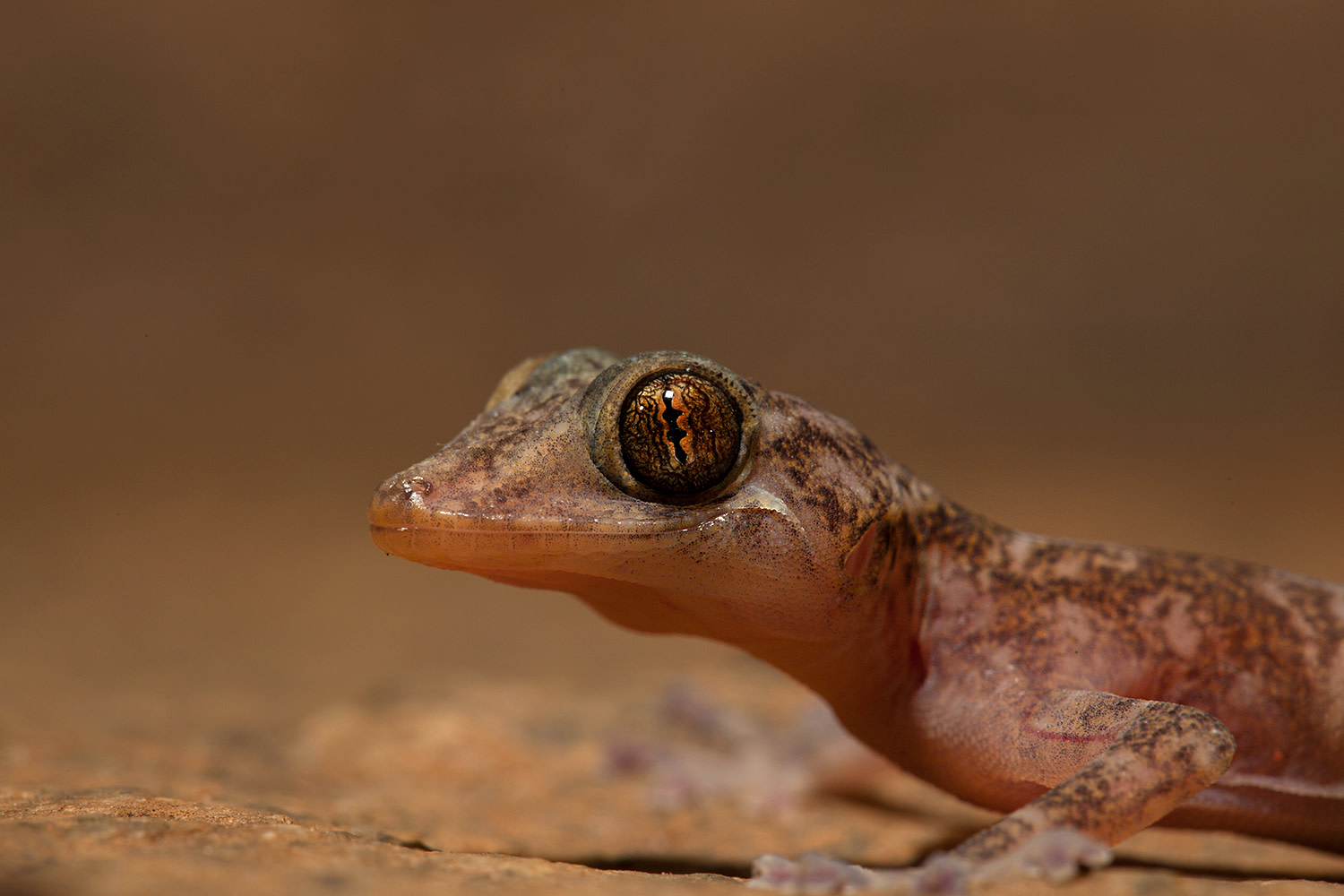 Listen to this article
•
15:34 min
Listen to this article
•
15:34 min
It was a hot afternoon in May 2010 and we had just scaled up the trail leading to the old fort at Gingee. My friend, Vivek, and I had rented a bike to ride up to this hillock, about 60 km from Pondicherry where we were studying ecology. As we reached the summit, we saw the remains of what used to be a magnificent fort and several buildings within. It was in ruins — littered with trash and with graffiti on the walls by forlorn romantics. At that uninspiring moment, little did we imagine that later in the day we were going to find gold. Not gold belonging to the 17th Century Nawab of Arcot, who ruled over the area, but the living, breathing kind. We were going to stumble upon a golden gecko (Calodactylodes aureus)!

The golden gecko was re-discovered in India from the hills near Tirupathi. The males are known to turn golden yellow in the breeding season and hence the name ‘golden gecko’.
How we struck gold
Gingee is a renowned tourist spot but, there were hardly any tourists when we got there. We leisurely strolled through the ruins. Along the way, we could hear the yellow-throated bulbuls (Pyctonotus xantholeamus), one of the birds we had wanted to see. We even chanced upon a pair of Shaheen falcons (Falco peregrinus peregrinator) that took off from a steep ledge and disappeared into the hazy horizon. It was along this path that we first heard the frog-like call. I pulled out my torch and in the faint light, we went towards the call. Crawling into a chamber between two boulders, we realised the call was coming from the ceiling. There were very few chances of it being a frog. Shining the torch up, we saw a gecko.
We did not know what species it was but made detailed notes and took a few photographs. The gecko was likely the length of our palm. The eyes popped out a little and there was a distinct yellow golden ring round each eye. A characteristic feature that struck us was its feet. It had a small claw on the tip of each digit but before that, it had two trapezoidal structures on each digit. These geckos were quite common and we saw a couple of them in a desolate ruin. While looking for the gecko, we saw several eggs stuck to the ceiling in dark and the gecko perched alongside it.
Outside the fort, the sun had begun to go down. The entire landscape was clothed by the gentle evening light. As far as the eye could see, there were broken granitic hills — boulders interspersed with a scrubby jungle. A few of the hillocks nearby had small forts atop them. On our way down, we finally saw several flocks of yellow-throated bulbuls. Delighted to have set eyes on what we originally came for, we hastened our pace. Hungry and famished, we headed back to Pondicherry. Then we began our quest to identify the mysterious gecko.

Identifying the mystery lizard
Searching for the gecko in the field guide turned out to be useless. So did a simple Internet search. I sent the images and our description to another friend, Sreekar, who had earlier worked on lizards, hoping that he would be able to identify it. In no time, he wrote back saying it was a golden gecko (Calodactylodes aureus). Soon, we realised that our finding from Gingee was the southernmost record of the species.
The gecko was described by Col. Henry Beddome in 1870 and it was lost to science until it was rediscovered in 1985, after over 100 years, from the Seshachalam and Velikonda ranges of Andhra Pradesh. There are two species in the genus Calodactylodes, C. aureus in India, and C. illingworthorum in Sri Lanka. Both the species are adapted to rocky habitats and are characterised by a pair of unique pads on fingers and toes, which presumably help them in holding on to rocky surfaces. The golden gecko is endemic to the Eastern Ghats, found in parts of Orissa, Andhra Pradesh, Telangana, and Tamil Nadu. It is currently listed as a Schedule I species in the Indian Wildlife Protection Act of 1972 alongside the Tiger. The females deposit several eggs at a time in community nests in and around moist areas.
Golden geckos losing their homes
The largest threat to this endangered species of gecko is habitat loss and fragmentation. The granitic hill chains of the Eastern Ghats are threatened by rampant and often, unregulated granite quarries. Forests surrounding Gingee that come under Pakkamalai Reserve Forest continue to be degraded due to extensive fuelwood collection, grazing, and encroachment of the forests. Within the Gingee fort area and the neighbouring Tiruvannamalai hills, the largest threat is perhaps the increasing number of tourists visiting this national monument.
Efforts are also underway to renovate and clean up the dilapidated buildings with cement and paint. This would destroy the gecko’s habitat and measures to conserve this unique species and its habitat must be undertaken. For that to happen, there needs to be an increase in awareness about geckos, the rocky habitats, and its role in the ecosystem. If not, this unique species may be plundered of its home.







